Introduction
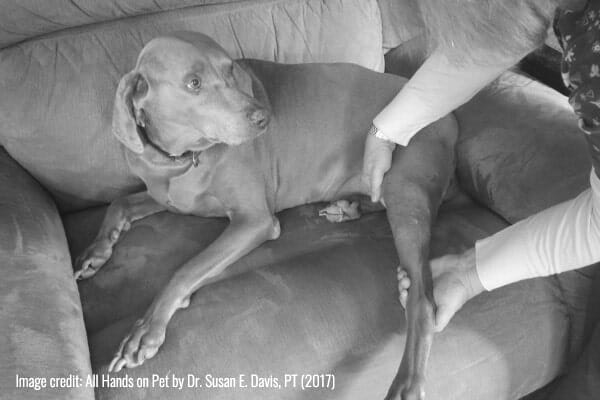
As dogs age, they may experience a decrease in energy levels and mobility. It is important to continue providing regular exercise for elderly dogs to help maintain their overall health and well-being. Regular exercise can provide numerous benefits, including improved joint flexibility, muscle strength, cardiovascular health, and mental stimulation. However, it is crucial to consider the specific needs and limitations of older dogs when designing exercise routines. This article will explore various low-impact exercises suitable for elderly dogs, as well as mental stimulation activities, proper nutrition, creating a safe environment for exercise, monitoring and adjusting exercise routines, and alternative options for senior dogs. By understanding and meeting the unique needs of our aging companions through exercise, we can ensure they lead active and healthy lives.
Benefits of exercising an elderly dog
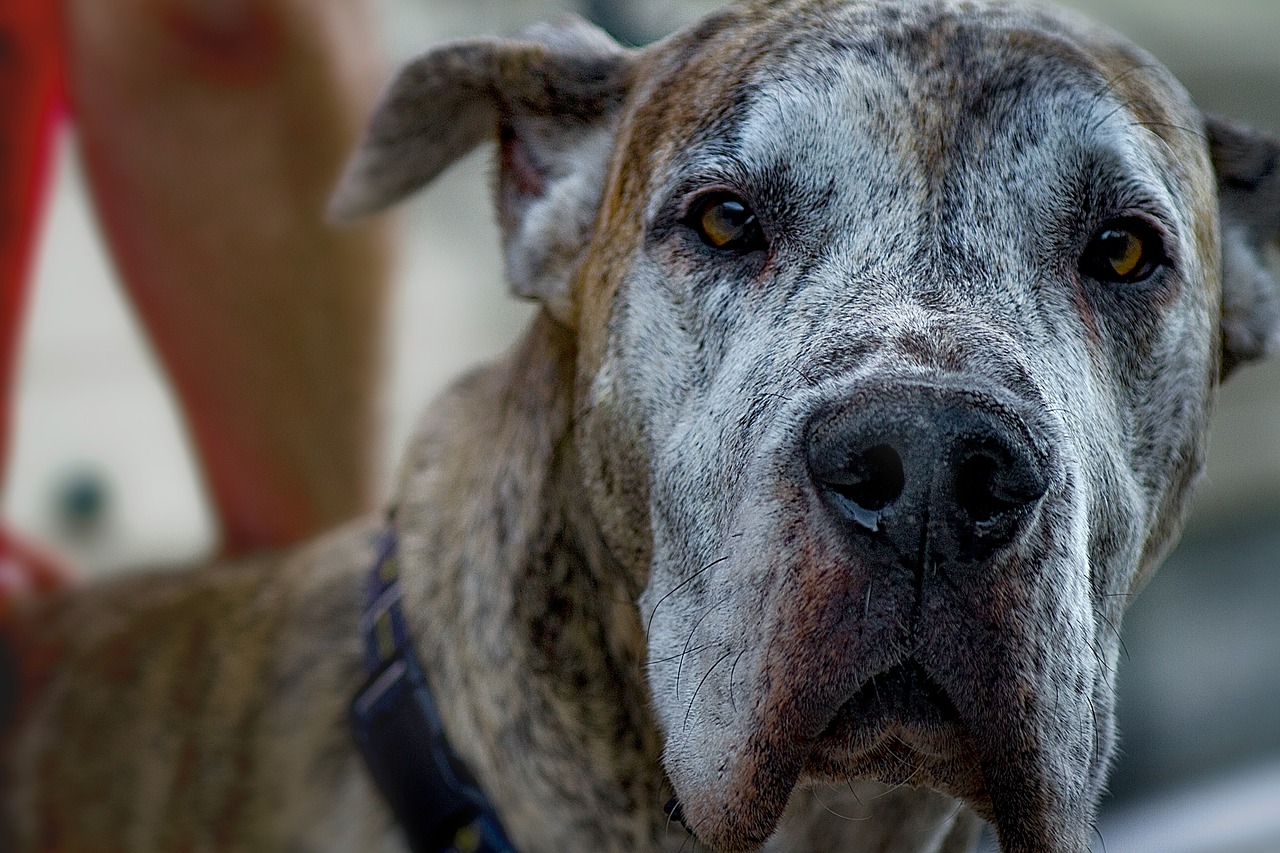
Exercising an elderly dog brings a multitude of benefits to both their physical and mental well-being. Regular exercise helps to maintain a healthy weight, preventing obesity, which can lead to various health issues such as heart disease and diabetes. It also promotes joint mobility, improving flexibility and reducing the risk of arthritis. Exercise stimulates blood circulation, keeping vital organs functioning optimally. Furthermore, physical activity provides mental stimulation, helping to combat cognitive decline and boredom in older dogs. Overall, exercising an elderly dog ensures they stay active, happy, and maintain a high quality of life.
Considerations for exercising an elderly dog

When it comes to exercising an elderly dog, there are a few important considerations to keep in mind. First and foremost, it's crucial to understand that as dogs age, their bodies become more fragile and susceptible to injuries. Therefore, exercise routines should be modified to ensure they are low-impact and gentle on the joints. Additionally, it's essential to take into account any existing health conditions your dog may have, such as arthritis or heart problems, and consult with your veterinarian about the appropriate level of activity for your furry companion. Lastly, monitoring your dog during exercise sessions for signs of fatigue or discomfort is crucial to ensure their well-being. Overall, taking these considerations into account will help keep your elderly dog active and healthy while minimizing the risk of injury.
Understanding your elderly dog's needs
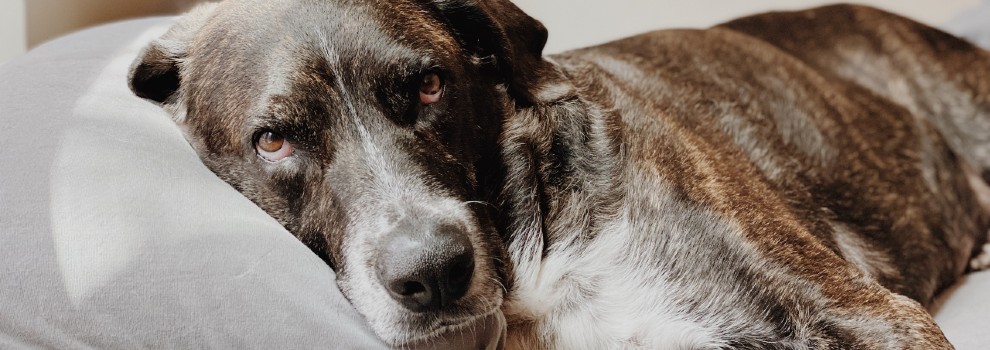
As dogs age, their bodies undergo various changes that may impact their exercise needs. It is important to understand and cater to these needs in order to keep your elderly dog active and healthy. One key aspect is recognizing the signs of aging in dogs, such as decreased mobility, stiffness, or changes in behavior. Consulting with a veterinarian can provide valuable guidance on the appropriate exercise routine for your senior companion. By understanding their specific needs, you can customize their exercise regimen to ensure it is safe and beneficial for their overall well-being.
Recognizing signs of aging in dogs
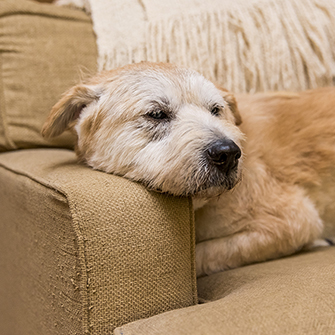
Recognizing signs of aging in dogs is essential for understanding their changing needs and providing appropriate care. As dogs get older, they may experience various physical and behavioral changes. One common sign of aging is a decrease in energy levels. Older dogs may become more lethargic and have less stamina for physical activities. Additionally, they may develop joint stiffness or arthritis, leading to difficulty in mobility. Other signs of aging can include changes in appetite, weight gain or loss, dental issues, vision or hearing loss, and cognitive decline. By being aware of these signs, pet owners can ensure that their elderly dogs receive the necessary support and adjustments to their exercise routines for optimal health and well-being.
Consulting with a veterinarian for guidance

When it comes to exercising your elderly dog, it's essential to consult with a veterinarian for guidance. A veterinarian can provide valuable insights into your dog's specific needs and health conditions. They will consider factors such as age, weight, breed, and any existing medical issues that may affect their ability to exercise. A thorough examination by a professional will help determine the appropriate level of activity and the types of exercises that will benefit your dog the most. It's important to follow your vet's recommendations to ensure the safety and overall well-being of your furry companion.
Low-impact exercises for elderly dogs

Low-impact exercises for elderly dogs are crucial in keeping them active and healthy without putting too much strain on their aging bodies. These exercises help to maintain muscle tone, joint flexibility, and overall strength. One excellent low-impact exercise for elderly dogs is walking. Regular walks on flat surfaces or gentle trails provide a low-intensity workout while allowing them to enjoy their surroundings. Another great option is swimming, which provides a joint-friendly workout that supports their weight while minimizing strain on their joints. These low-impact exercises promote cardiovascular health, increase mobility, and contribute to the overall well-being of your elderly canine companion.
Walking for exercise

Walking is one of the most accessible and beneficial forms of exercise for elderly dogs. It provides a low-impact workout that helps maintain their overall health and mobility. Regular walks can help keep their joints flexible, strengthen muscles, and improve cardiovascular fitness.
When walking an elderly dog, it's important to consider their limitations and adjust the duration and intensity accordingly. Shorter, more frequent walks may be better suited for dogs with mobility issues or chronic pain. It's also essential to choose appropriate walking surfaces to minimize the risk of slips or falls.
Not only does walking provide physical exercise, but it also offers mental stimulation for your furry friend as they explore the environment and interact with other animals or people. Remember to bring along water and take breaks as needed to ensure your dog stays well-hydrated and comfortable during the walk.
Swimming for joint-friendly workouts
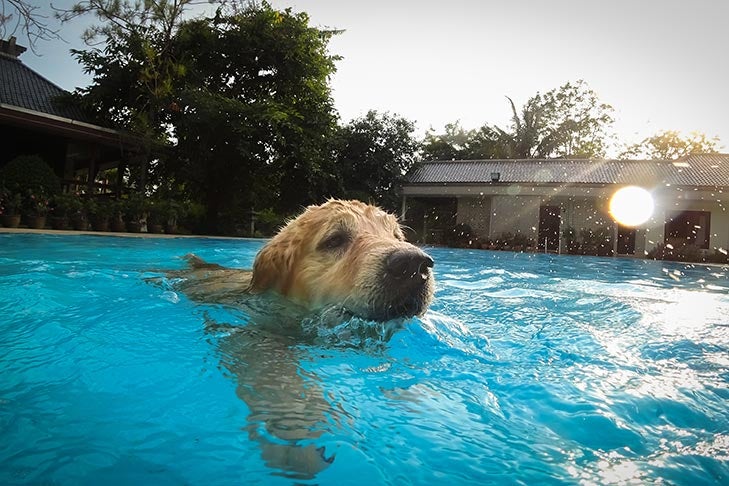
Swimming is an excellent form of exercise for elderly dogs, as it provides a joint-friendly workout that is gentle on their aging bodies. The buoyancy of the water helps to support their joints and reduce the impact of movements. Additionally, swimming allows elderly dogs to engage in cardiovascular activity without putting stress on their joints.
Swimming not only provides a low-impact workout but also helps to strengthen muscles and improve range of motion. It can be particularly beneficial for dogs with arthritis or other joint-related issues.
When introducing your elderly dog to swimming, ensure that the water is at a comfortable temperature and that they are supervised at all times. Gradually introduce them to the water and let them become familiar with swimming strokes. Whether in a pool or natural body of water, swimming can be a fun and refreshing way for your elderly dog to stay active and maintain their overall health.
Mental stimulation activities for elderly dogs
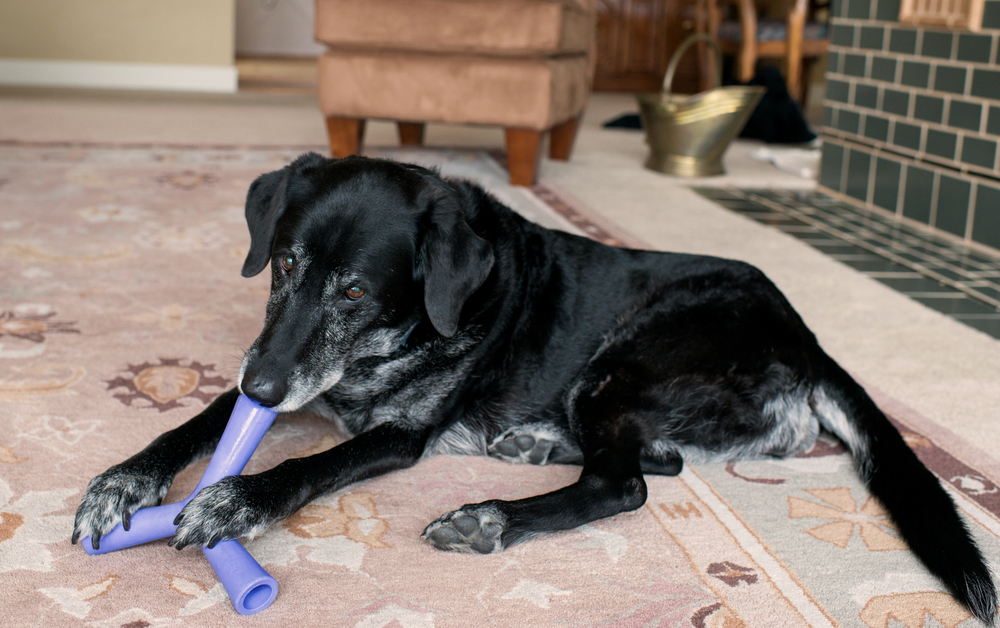
Keeping your elderly dog mentally stimulated is just as important as providing physical exercise. Mental activities help keep their minds sharp and can prevent cognitive decline. Puzzle toys and treat-dispensing games are great options for mental stimulation. These toys require your dog to use problem-solving skills to access treats or rewards, keeping their brain engaged. Another option is training and obedience exercises. Teaching your elderly dog new tricks or reinforcing existing commands not only provides mental stimulation but also strengthens the bond between you and your furry friend. By incorporating these activities into your senior dog's routine, you can help keep their mind active and prevent boredom.
Puzzle toys and treat-dispensing games
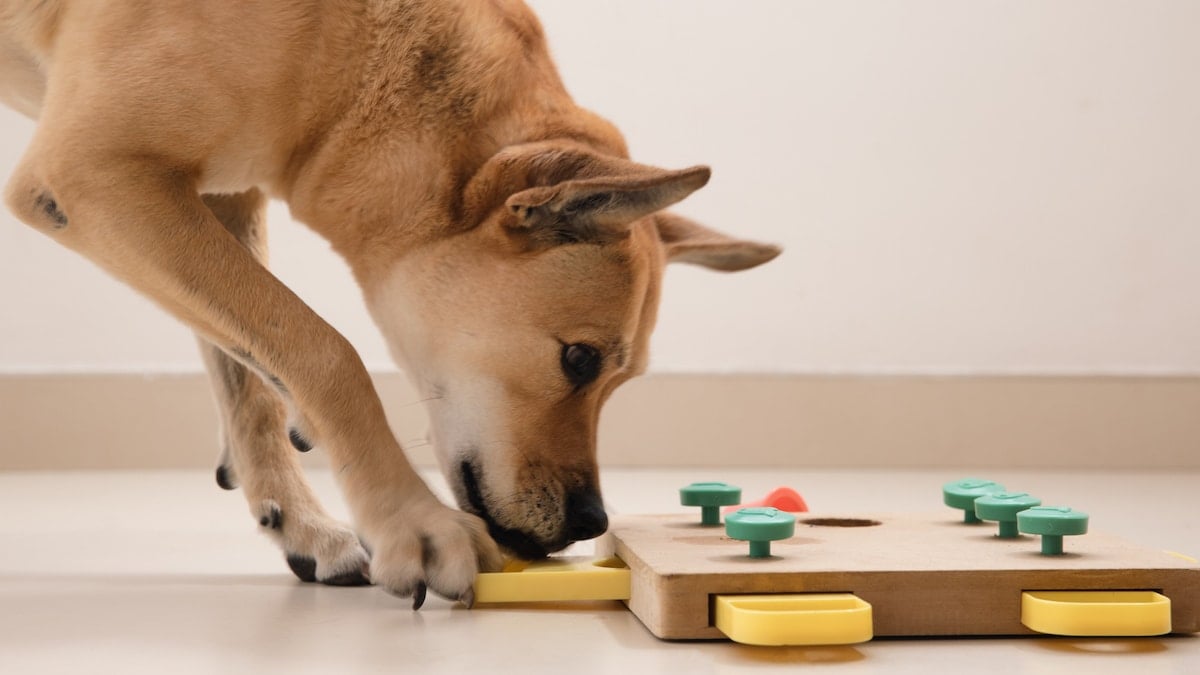
Puzzle toys and treat-dispensing games can provide mental stimulation for your elderly dog while also giving them a fun and rewarding challenge. These types of activities engage their problem-solving skills and help keep their minds sharp. Puzzle toys are designed with hidden compartments or obstacles that dogs must figure out how to navigate in order to find treats or their favorite toy.
Treat-dispensing games, on the other hand, require dogs to work for their rewards by interacting with a toy that releases treats as they play. These activities not only keep your dog mentally engaged but also provide a great deal of entertainment and satisfaction.
Training and obedience exercises

Training and obedience exercises play a vital role in keeping elderly dogs mentally stimulated and engaged. These exercises not only provide mental stimulation but also reinforce good behavior and maintain their cognitive abilities. Simple commands like sit, stay, and come can help improve their overall obedience and ensure their safety during walks or outings. In addition to basic commands, incorporating trick training can be a fun way to challenge their minds and keep them motivated. Regular training sessions should be short, positive, and rewards-based to make them enjoyable for both the dog and the owner.
Proper nutrition for a healthy senior dog

As dogs age, their dietary needs change, and it becomes crucial to provide them with proper nutrition for a healthy and happy life. Senior dogs may require a specialized diet that supports their aging bodies. Balancing their diet and controlling portion sizes is essential to prevent weight gain and maintain optimal health. Including high-quality protein sources, such as lean meats or fish, can help preserve muscle mass and support overall well-being. Additionally, adding supplements like glucosamine and omega-3 fatty acids can promote joint health and reduce inflammation. Consulting with a veterinarian can provide valuable guidance on choosing the right diet plan for your elderly dog's specific needs.
Balancing diet and portion control

When it comes to maintaining the health and well-being of your elderly dog, balancing their diet and practicing portion control is crucial. As dogs age, their metabolism slows down, making them more prone to weight gain and other health issues. It's important to provide them with a balanced diet that includes the right amount of nutrients while also controlling their portion sizes.
A senior dog's diet should consist of high-quality protein, healthy fats, and complex carbohydrates. Consult with your veterinarian to determine the appropriate caloric intake for your furry friend based on their age, weight, and activity level. Remember to consider any special dietary needs or conditions they may have.
Portion control is essential to prevent overfeeding and maintain a healthy weight. Use measuring cups or scales to accurately portion their meals according to the recommended guidelines. Avoid free-feeding or leaving food out all day as it can lead to obesity.
By carefully balancing your elderly dog's diet and practicing proper portion control, you can help them maintain a healthy weight and overall well-being as they age.
Supplements for joint health and overall well-being

Supplements play a crucial role in promoting joint health and overall well-being in elderly dogs. As dogs age, their joints become more susceptible to stiffness and inflammation, making it essential to provide them with the necessary nutrients for maintaining joint health.
Glucosamine and chondroitin supplements are commonly recommended for senior dogs, as they help support cartilage and lubricate the joints. Omega-3 fatty acids can also be beneficial, as they have anti-inflammatory properties that can reduce joint pain and improve mobility.
In addition to joint supplements, it's important to consider overall well-being. Supplements containing antioxidants, such as vitamins C and E, can help support your dog's immune system and protect against cell damage caused by aging. Consult with your veterinarian to determine the best supplements for your elderly dog's specific needs.
Creating a safe and comfortable exercise environment
Dog-proofing the exercise area
Using equipment to support stability and mobility
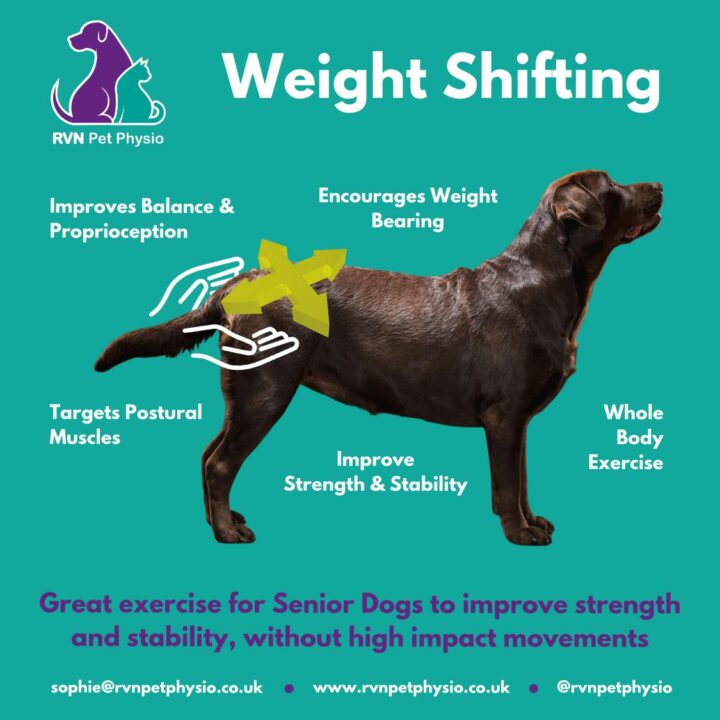
Using equipment to support stability and mobility can greatly benefit elderly dogs during exercise. One option is to provide a supportive harness or sling that can assist with lifting and supporting your dog's weight. This can be especially useful if your dog has mobility issues or weakness in their limbs.
Additionally, using ramps or steps can help your dog safely navigate obstacles such as getting into the car or climbing onto the bed. These aids reduce strain on their joints and minimize the risk of injury.
Investing in a non-slip mat or carpeting can also provide traction for your dog's paws, preventing slips and falls during exercise. It's essential to create a secure and stable environment that supports your dog's movements and prevents accidents.
By utilizing the right equipment, you can ensure that your elderly dog stays safe and experiences minimal discomfort while participating in physical activities.
Monitoring and adjusting exercise routines
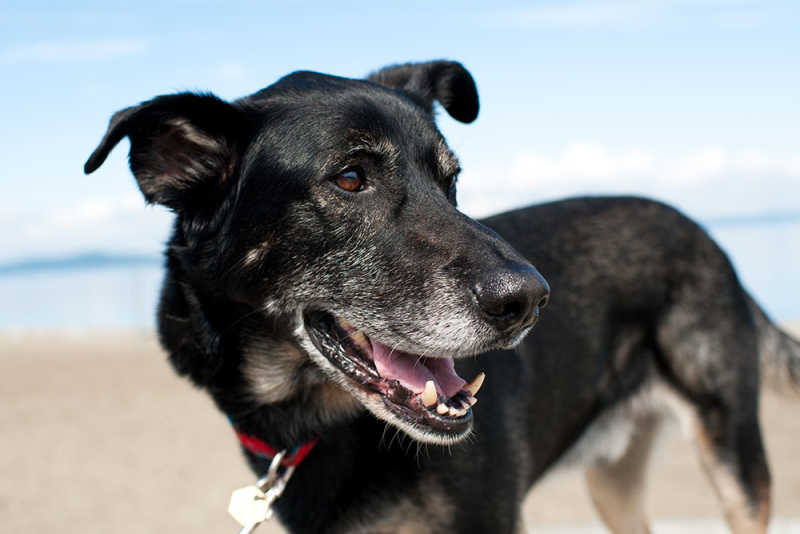
Monitoring and adjusting exercise routines is crucial when it comes to keeping an elderly dog active and healthy. It's important to closely observe your dog's behavior during exercise sessions. Look out for signs of fatigue or discomfort, such as excessive panting, stumbling, or reluctance to continue. If you notice any of these signs, it may be necessary to reduce the intensity or duration of the exercise. Additionally, each individual dog has their own capabilities and limitations. It's essential to adapt the exercises accordingly to ensure they are appropriate for your dog's age and physical condition. Regularly reassessing and modifying the exercise routine will help prevent injury and maintain the overall well-being of your elderly dog.
Recognizing signs of fatigue or discomfort

Recognizing signs of fatigue or discomfort is essential when exercising an elderly dog. While it's important to keep them active, overexertion can lead to injury or strain. Watch for signs such as excessive panting, slowing down, limping, or reluctance to continue the exercise. If your dog shows any of these signs, it may be time to take a break or modify the activity. It's crucial to listen to your dog and respect their limits. Remember, each dog is unique and may have different capabilities and endurance levels. Adjusting the exercise routine accordingly will help keep your furry companion safe and comfortable.
Adapting exercises for an individual dog's capabilities

When it comes to exercising an elderly dog, it's essential to consider their individual capabilities and limitations. Every dog is unique, and their exercise needs may vary based on factors such as breed, size, and overall health. Adapting exercises to suit your dog's capabilities is crucial to prevent any unnecessary strain or injury.
Start by observing your dog during exercise sessions and look for signs of fatigue or discomfort. If you notice that they are struggling or seem tired, it may be necessary to modify the exercise routine. This could involve reducing the duration or intensity of the activity.
Additionally, consider incorporating exercises that are gentle on joints and muscles. Low-impact activities like slow walks or swimming can provide a good workout while minimizing stress on the body. It's also important to provide plenty of breaks and opportunities for rest during exercise sessions.
By adapting exercises to match your elderly dog's capabilities, you can ensure they stay active in a safe and enjoyable way. Consulting with your veterinarian can provide valuable guidance on how to tailor exercise routines specifically to your dog's needs.
Alternative exercise options for elderly dogs
Physical therapy and hydrotherapy

Physical therapy and hydrotherapy are excellent exercise options for elderly dogs. Physical therapy involves targeted exercises and techniques that help improve mobility, flexibility, and reduce pain in aging dogs. This can include exercises such as stretching, range of motion exercises, and therapeutic modalities like heat or cold therapy.
Hydrotherapy, on the other hand, involves exercising in a pool or underwater treadmill. The buoyancy of water reduces pressure on joints while providing resistance for muscle strengthening. This low-impact exercise is ideal for senior dogs with arthritis or mobility issues.
Both physical therapy and hydrotherapy should be supervised by professionals trained in canine rehabilitation to ensure safety and effectiveness. These therapies can greatly enhance an elderly dog's quality of life by improving their overall strength, mobility, and comfort.
Senior dog fitness classes

Senior dog fitness classes are a fantastic option for exercising elderly dogs. These specialized classes cater specifically to the unique needs and limitations of senior canines. Led by trained instructors, these classes focus on gentle exercises that promote mobility, strength, and balance in older dogs while minimizing the risk of injury.
In senior dog fitness classes, participants engage in activities such as stretching, balance exercises, and light cardio to improve overall health and well-being. These classes provide a supportive and social environment where owners can bond with their pets while also benefiting from the guidance of professionals who understand the specific challenges faced by aging dogs. Senior dog fitness classes can be a wonderful addition to an elderly dog's exercise routine, helping them stay active, healthy, and happy in their golden years.
Conclusion

In conclusion, regular exercise plays a crucial role in maintaining the health and well-being of elderly dogs. By engaging in low-impact exercises and mental stimulation activities, such as walking, swimming, puzzle toys, and training exercises, senior dogs can stay active and maintain their cognitive abilities. Additionally, proper nutrition and a safe exercise environment are essential for their overall health. It is vital for dog owners to closely monitor their elderly companion during exercise routines, adjusting as needed to prevent fatigue or discomfort. Alternative options like physical therapy or senior dog fitness classes can also provide additional support. By prioritizing exercise and providing a balanced lifestyle, owners can ensure the unique needs of their aging pets are met, allowing them to enjoy a happy and healthy life.
The importance of regular exercise for elderly dogs
Tips for maintaining an active and healthy lifestyle for your senior companion
- Regular exercise: Engage your senior companion in low-impact exercises such as gentle walks or swimming to keep their muscles toned and joints flexible.
- Mental stimulation: Keep their minds sharp by providing puzzle toys or engaging in obedience training sessions. This will help prevent cognitive decline and keep them mentally alert.
- Balanced diet: Feed your elderly dog a nutritionally balanced diet that is appropriate for their age and size. Consult with a veterinarian to determine their specific dietary needs.
- Regular veterinary check-ups: Schedule regular visits with your vet to monitor any health changes and address any concerns promptly.
- Joint support supplements: Consider incorporating joint support supplements, such as glucosamine, into your senior dog's routine to promote joint health and mobility.
- Comfortable environment: Ensure that your dog's exercise area is free from hazards and provides adequate support for their stability and mobility.
By following these tips, you can help maintain an active and healthy lifestyle for your senior companion, ensuring they enjoy their golden years to the fullest.




0 Comments